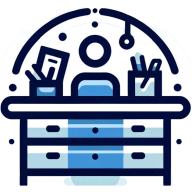4 Techniques for Effective Note-Taking During Meetings
Effective note-taking during meetings can significantly enhance productivity and information retention. This article explores innovative techniques for capturing and organizing meeting information, drawing from the expertise of seasoned professionals. From leveraging patient insights to blending digital and handwritten methods, these strategies offer practical solutions for transforming meeting notes into valuable, actionable resources.
- Capture Patient Insights for Personalized Care
- Convert Meeting Notes into Actionable Tasks
- Adapt Cornell Method for Digital Efficiency
- Blend Digital and Handwritten Note-Taking Techniques
Capture Patient Insights for Personalized Care
I use the "patient-centered capture" method during clinical consultations—documenting immediate symptoms, exact patient quotes, and follow-up care plans. In Direct Primary Care, every conversation contains insights that strengthen the therapeutic relationship and improve health outcomes. I document patients' exact words about their concerns because their language reveals underlying fears and motivations that traditional medicine often misses due to time constraints.
After appointments, I categorize notes by care domains: acute issues go to immediate treatment plans, lifestyle factors feed into preventive strategies, and patient goals inform long-term wellness approaches. The real breakthrough happens when I cross-reference patient insights with their health trends during weekly chart reviews—patterns emerge that reveal which interventions create lasting behavior change.
This systematic approach transforms scattered observations into comprehensive, patient-centered care plans that address root causes rather than just symptoms. My notes become the foundation for building trust and delivering personalized medicine that patients actually understand and follow. That's how care is brought back to patients.
Convert Meeting Notes into Actionable Tasks
During meetings, I use a hybrid note-taking method I call "Signal & Summary." I jot real-time shorthand notes in a split-page layout—left side for raw points, right side for quick takeaways. For example, if someone mentions a client issue, I'll write "client-X delay - needs follow-up" on the left, and on the right, I'll summarize the action: "Follow up by Thurs." After the meeting, I review my notes within an hour, highlight anything tied to deadlines, and immediately plug those into my task manager (I use Notion). This way, ideas don't just sit in a notebook—they're converted into action. I've found this prevents important points from getting lost, especially in fast-paced team meetings where decisions and follow-ups come quickly.

Adapt Cornell Method for Digital Efficiency
One of the techniques I use for taking notes during meetings is the Cornell Method, adapted for digital use. I split my note-taking page into three sections: a main area for notes, a narrower column on the left for keywords or questions, and a summary at the bottom. This helps me stay focused during the meeting by capturing key points and action items in real-time and organizing the information in a way that's easy to review later.
After the meeting, I take a few minutes to quickly scan the notes and highlight any follow-ups or decisions that need to be actioned. I then tag and file them in a project folder in my digital workspace, like Notion or OneNote, so they're accessible and searchable. The left-hand column is especially useful for scanning or prepping for future check-ins — it's like a built-in index.
This has helped me retain more information and cut down on time spent reviewing scattered notes. It keeps everything contextual, actionable, and easy to revisit when it's time to follow up or prep for the next round.

Blend Digital and Handwritten Note-Taking Techniques
Most of my meetings are held virtually, and when I take notes, I do a combination of both digital notes and handwritten ones. I always have a document open where I type notes up, and that's where I record the majority of my notes. I also always have a notepad on my desk so that I can hand-write anything that is especially important or can't be easily typed. Afterward, I try to type things up in a neater, more understandable manner while the meeting is still fresh in my mind.



